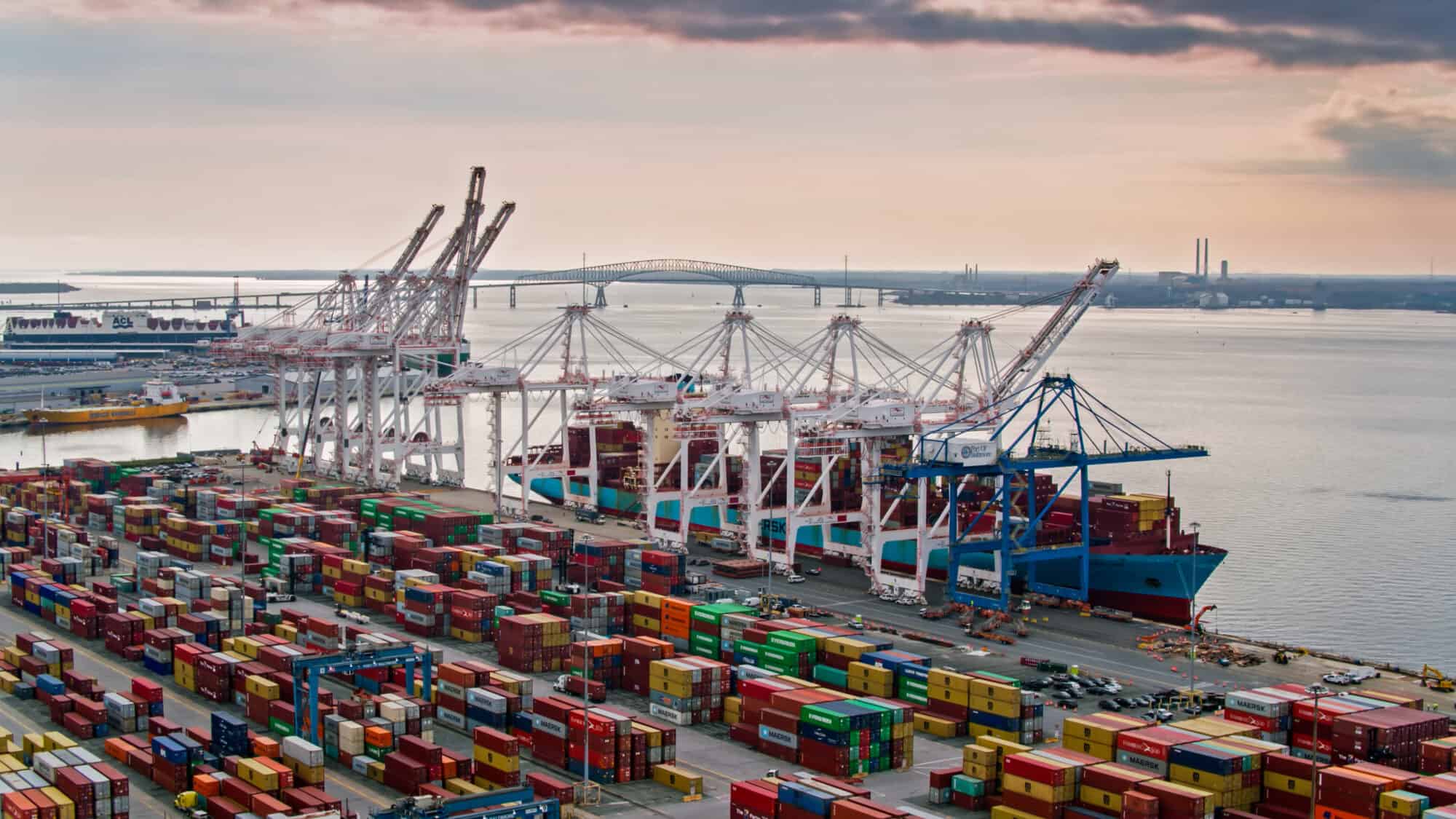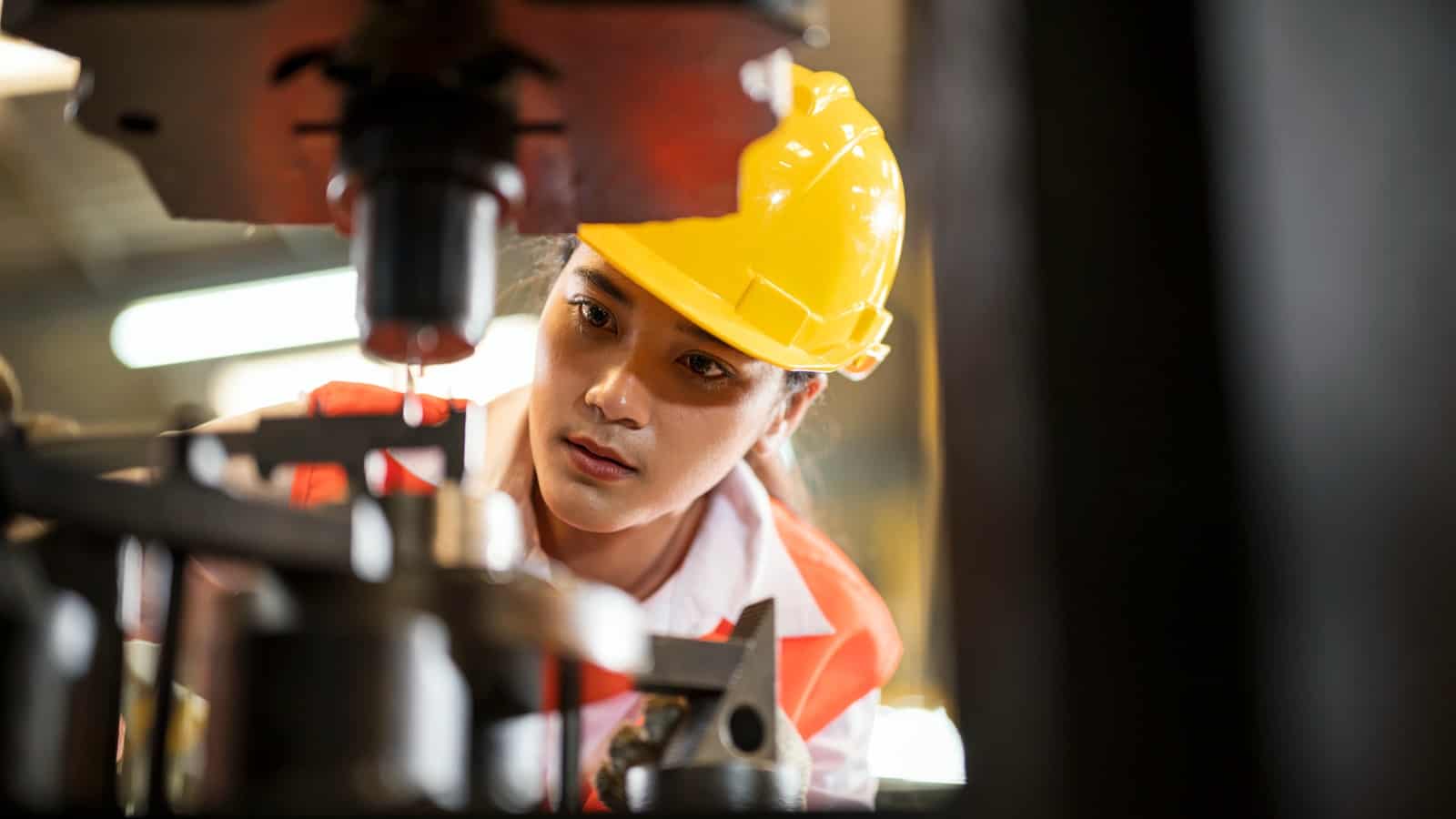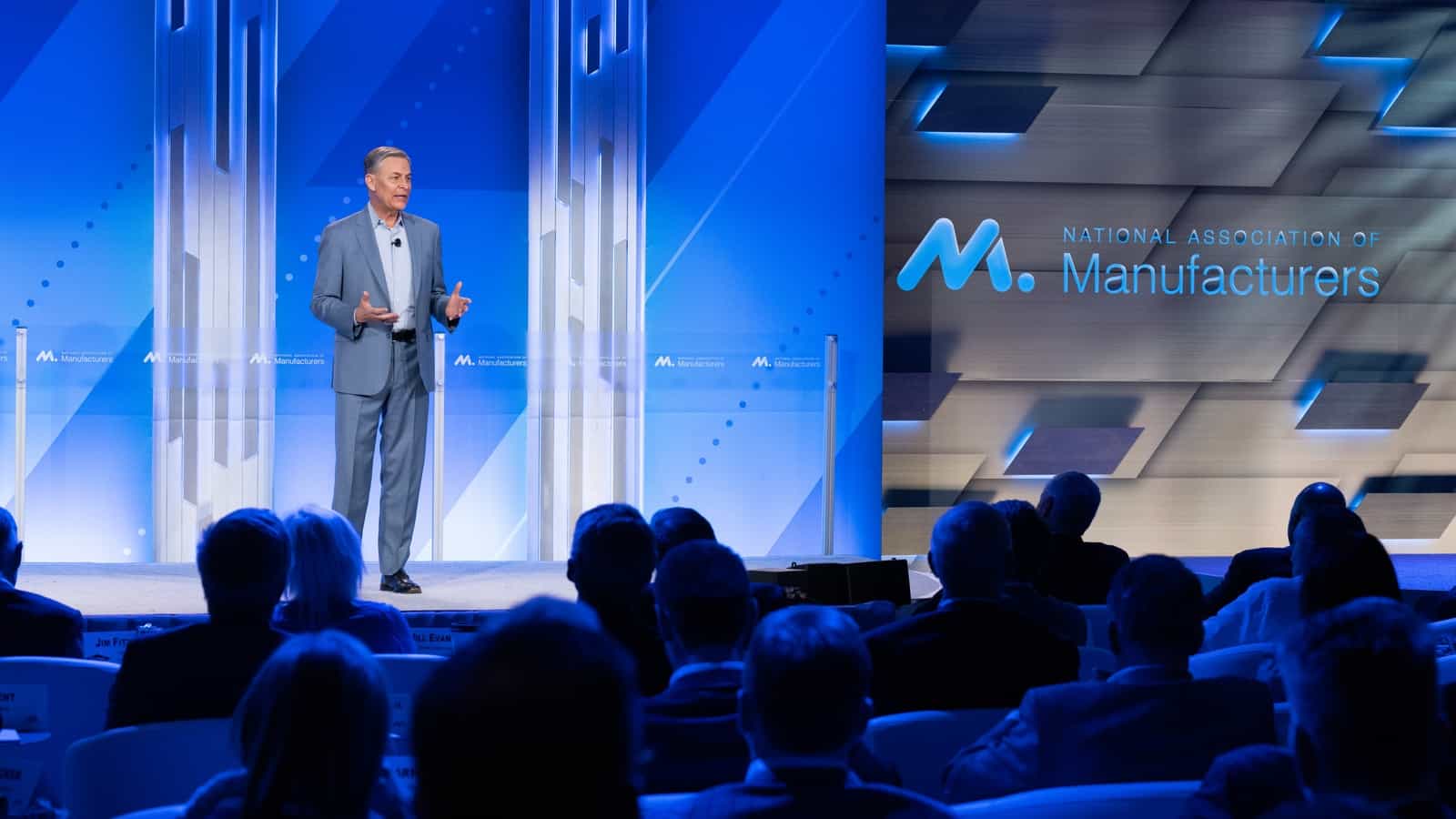Baltimore Bridge Collapse to Hit Shipping, Port Jobs

Vessel traffic in and out of the Port of Baltimore—which contributes $15 million a day in economic activity, Business Insider reports—was suspended Tuesday after a container ship hit the Francis Scott Key Bridge in the early morning. The collision caused the bridge to collapse, sending at least seven vehicles and their occupants into the Patapsco River, according to the Baltimore Sun (subscription).
What’s going on: “Officials, who spoke amid a continuing and massive search and rescue mission, said the port was not shut down and remained open to process trucks inside terminals.”
- Other ports are likely to be able to absorb container ships headed for Baltimore, The New York Times (subscription) reports.
Why it’s important: “The port, which generates more than 15,300 direct jobs, had rebounded from global supply chain difficulties and disruptions during the coronavirus pandemic and hit records last year for handling cargo,” according to the Baltimore Sun. “It is the nation’s 16th busiest port, ranking first for volume of autos and light trucks, roll-on/roll-off heavy farm and construction machinery, imported sugar and imported gypsum.”
- Baltimore is the closest Atlantic port to major Midwestern manufacturing hubs.
- Truckers are concerned about increased congestion resulting from the closure, “particularly because deliveries such as hazardous material loads cannot travel through Interstate 895 or I-95 tunnels.” Trucking companies are already warning customers of delays for shipments going through the Mid-Atlantic, according to The Wall Street Journal (subscription).
- In addition to affecting consumers in the Baltimore area, the traffic stoppage is likely to affect jobs at the port.
Cereal Contest Stirs Interest in Manufacturing

Gilster-Mary Lee Corporation has discovered a way to interest students in manufacturing: through their stomachs.
With support from the Illinois Manufacturers’ Association, the Chester, Illinois–based private-label food manufacturer recently chose the winner of its second annual “Create A Crunch” cereal-design contest for local high schoolers.
- “It’s critically important for our nation’s future that we attract the next generation of creators and makers, dreamers and doers who want to make our world a better place to live,” said IMA President and CEO Mark Denzler. “‘Create A Crunch’ is a fun and innovative way to encourage kids to explore all facets of manufacturing.”
A winner of an idea: The contest, which each year poses an essay-writing question on a manufacturing-related topic, came about when Gilster-Mary Lee was brainstorming ways to participate in National Manufacturing Month, which is October.
- “We were looking for a way to participate that would be meaningful and get kids—students—excited” about manufacturing, said President and CEO Tom Welge, a direct descendant of the company’s founding Gilster family, which started the firm in the late 19th century as the Gilster Milling Company.
- “We’d done a lot of celebrity cereals [such as a recent one featuring college basketball star Caitlin Clark], and they’re really popular. So I thought, why not involve students in the creation of a product and turn it into a way to educate them about manufacturing, maybe focusing on a particular topic in the industry we believe is important?”
An educational opportunity: “Create A Crunch” was born and is already off to a roaring start. In 2022, the contest garnered more than 300 entries from students throughout Illinois and Missouri. In 2023, it received more than 400.
- In addition to getting to choose the type of cereal, name and box design for their limited-run branded breakfast food, each year’s winner gets 2,500 boxes for their school, which “they can sell in a fundraiser, donate, whatever they want,” Welge said.
- The most recent winner, a senior at Notre Dame Regional High School in Cape Girardeau, Missouri, chose a blue, fruit-flavored ring-shaped cereal, which will be called “Bulldog Bites” in honor of her school’s mascot. The cereal boxes are slated for delivery in April.
- The 2023 writing prompt: What are the best things artificial intelligence can do for manufacturing, and do you think there are any things we should be concerned about?
Tough choices: Once the entry deadline has passed, a panel from Gilster-Mary Lee reads and rates every submission, then develops a short list of finalists. It sends these 10 names to the IMA for winner selection.
- The IMA has a difficult task before it in choosing the best submission, Welge added.
- “It’s not easy, but an understanding of the question is key, as is originality,” Welge continued. “The best essays [are] the ones that do the research and really put some thought behind it.”
More than a contest: Gilster-Mary Lee and the IMA are hoping that thought will transcend the contest and translate to participation in the manufacturing industry, which is in serious need of talent nationwide.
- In Illinois, the industry employs more than 650,000 people, Denzler said, making it “the single largest share of our economy.”
Perception change: “Create A Crunch” seems to be opening kids’ eyes to modern manufacturing, Welge said.
- “I think we have more visibility [now] into what we do,” he told us. “We produce for wholesalers across the U.S. and outside as well. So this is a way for us to pull back the curtain a bit and let people know there’s pretty big-sized manufacturer in this rural area, and we’re looking for talent.”
Up next: The contest may have started with cereal, but don’t be surprised if other foods come into play, said Welge, whose company also makes pancake mix, macaroni and cheese and many other convenience foods.
- “Should we do ‘Make A Mac’ next year? We’re not ruling anything out.”
Trend of the Week: Smart Factories

In 2024, factories will just keep getting smarter. From product design to supply chain management, the sophistication of Manufacturing 4.0 (the current wave of technological evolution) will keep on growing. Here’s what manufacturers should know about these advances and how the NAM can help.
What manufacturers should do: Manufacturers looking to make their factories smarter are focusing on four key strategies:
- Creating efficiencies to improve the bottom line with automation and other M4.0 technologies
- Leveraging smart factories to overcome challenges, such as the workforce crisis and supply disruptions
- Ensuring connectivity on the factory floor to allow for use of plant data to create new business models and revenue streams
- Using M4.0 technologies to improve quality control, speed time to market, enhance safety, boost profits, contribute to sustainability goals and engage employees
Expert opinion: Companies are increasingly investing in industrial connectivity, according to PTC Vice President of Market Development of IoT James Zhang.
- “Rather than approaching industrial connectivity with point-to-point integrations, companies are developing holistic, enterprise-wide strategies,” he explained.
- “This approach streamlines and standardizes data from heterogenous manufacturing environments to a single industrial connectivity platform to provide secure, reliable data for OT systems, including MES and SCADA, and IT systems, including data analytics and industrial IoT.”
Resources for you: Check out these NAM resources that will help guide you through these technological changes:
- The Manufacturing Leadership Council, the NAM’s digital transformation division, offers extensive advice and expertise on Manufacturing 4.0 technologies and how to use them.
- NAM Cyber Cover can help you protect your smart factories, as the increase in digitization also opens new avenues for cyber criminals.
- Check out this podcast from the Innovation Research Interchange (the NAM’s innovation division), which covers current research into the adoption of cutting-edge technologies.
Read the full 2024 trends report here.
Dockworker Labor Talks to Restart Amid Tension

Contract talks between dockworkers and their employer on the East and Gulf coasts have yet to begin, but tensions are already flaring, The Wall Street Journal (subscription) reports.
What’s going on: “The International Longshoremen’s Association … is already threatening a strike against shipping companies and port employers if a deal on a new multiyear contract can’t be reached before the current agreement expires Sept. 30.”
- The ILA, which represents more than 45,000 dockworkers “at ports from Maine to Texas, has told local chapters to resolve local work issues with employers by May 17 so that a coast-wide deal can be negotiated before the current contract expires. Formal negotiations would be scheduled once the local agreements are reached.”
- Talks began in late 2022 but stalled a year ago.
The background: In September, after 14 months of often-tumultuous negotiations and several walkouts and work stoppages, West Coast dockworkers reached an agreement with their employer, the Pacific Maritime Association.
- The Biden administration stepped in to help broker that deal.
Why it’s important: “Any walkout would hit the gateways in the middle of the busiest part of the shipping season, when retailers and other importers prepare for holiday consumer sales.”
- To avoid potential delays, East Coast importers are expected to bring in holiday-season goods early this year or send more goods from Asia to the U.S. via West Coast ports.
- The large wage increases ILA is said to be pursuing could prove difficult for carriers to sustain, given the post-pandemic decline in freight demand.
Trend of the Week: Building Resilience

Some disruptions—like global pandemics—are just too unexpected to anticipate. As manufacturers consider the unknowns they may face in the years ahead, they are prioritizing general resilience instead of attempting to plan for everything. Here’s what you should know about this major trend in 2024.
What manufacturers should do: Manufacturers should focus on these four areas to increase their resilience, according to the NAM’s experts:
- Enhance cybersecurity to guard against new and emerging cyberthreats.
- View resilience as a necessary tool to protect business amid economic uncertainty.
- Shift leadership strategies to build a strong plan for future success, including establishing a path for development and cultivation of future leaders.
- Plan for more and as-yet-unknown disruptions in the future.
Expert opinion: Mike Lipinski, cybersecurity partner at Plante Moran, advises manufacturers concerned about the rising threat of ransomware. He points out how the dangers have evolved in recent years:
- “Manufacturing businesses that fall prey to ransomware can be attacked multiple times. Adversaries who breach your system sell other cybercriminals information about how they got in. The risk isn’t only data theft and access to information but also the criminals’ ability to create backdoors into your environment.”
Resources for you: Check out these NAM resources that can help companies bolster their resilience:
- Here is a useful guide that can guide you through dealing with disasters.
- Check out the NAM Shipping & Logistics program, which can help you cope with delays in shipments and funds in case the unexpected happens.
- If you’re facing legal issues, the NAM’s Legal Referral Service, powered by Meritas, can connect you to world-class legal talent in every sector of law.
Read the full 2024 trends report here.
How Close Is the Smart Factory of the Future?

Manufacturing is marching toward a future that is highly automated, intelligent and flexible.
Increasingly, smart factories are made up of connected machines that generate large amounts of data. This opens the door for artificial intelligence–driven analysis and new opportunities for insights on improving supply chains, processes, the customer experience, product quality and more.
But realizing this transformation can be difficult. Not all manufacturers have the resources, capital or talent required for a smart factory future. How are companies progressing on this journey, and what challenges stand in the way? To find out, the Manufacturing Leadership Council—the NAM’s digital transformation arm—conducted its Smart Factories and Digital Production survey.
Manufacturers are committed to M4.0: When it comes to digital technology, manufacturers are spending at a steady—and in some cases growing—basis.
- Nearly 69% of survey respondents said their M4.0 investments this year would continue unchanged from last year.
- Nearly 19% said they would increase investments, while just 10% said their investments would likely decline.
- Some 58% assessed their company’s digital maturity level in manufacturing operations at three to five on a scale of 10, suggesting the industry has moved beyond the initial stages of M4.0 and has reached an early majority of digital-model adoption.
How widespread are digital factories? Only about 7% of manufacturers say they have digitized their factory operations extensively.
- Approximately 15% expect to have their manufacturing operations digitized end-to-end by 2026.
- About 5% say their factories are already “very smart.”
- Approximately 53% say their factories and plants are getting smarter but are still works in progress.
In the future, will factories run themselves? While some manufacturers foresee a future of “lights out” factories, or those that mostly run themselves, most don’t think they will ever reach that state.
- About 49% of respondents expect fully or partially autonomous factories in the future.
- Some 40% say AI will be either very significant or somewhat significant in the years to come.
- Approximately 56% cite organizational resistance to change as the top barrier to implementing a smart factory.
For more details on these findings and the impact of smart factories as a whole, read the survey report: Smart Factories Are Still a Work in Progress.
Trend of the Week: Process Innovation

Amid an uncertain economy, manufacturers will have to reinvent and upgrade their processes, from training employees to organizing supply chains and more. For today’s manufacturing trend of 2024, we’re looking at manufacturers’ efforts to improve their processes across their operations.
What manufacturers should do: Manufacturers looking to guard against economic upheaval should consider these steps, according to NAM experts:
- Consider improvements to techniques, tools, software, technologies and behaviors.
- Streamline customer service and the way products are sold to customers.
- Optimize the supply chain with help from partners, automation and design improvements.
- Reinvent processes to realize benefits (e.g., speed time to market, cut costs, work around supply challenges).
Expert opinion: Manufacturers are investing heavily in innovation, even as budgets have become tighter, according to EY Americas Industrial Products Sector Leader Brian M. Legan.
- As he points out, “Nearly half (49%) of manufacturing CEOs who participated in the EY CEO Outlook Survey plan on accelerating or maintaining current levels of innovation investment and portfolio transformation.”
- Meanwhile, “more than half of these CEOs (56%) also indicated that the main source of financing for these investments will be from savings generated from business performance improvements.”
Resources for you: Check out these NAM resources to learn more about manufacturers’ process improvements:
- The Innovation Research Interchange is an NAM division devoted to studying the next wave of manufacturing innovation and providing manufacturers with the resources they need to benefit from it.
- You can also get an inside look at process innovation by attending the Manufacturing Leadership Council’s plant tours. (The MLC is the NAM’s digital transformation division.)
Read the full 2024 trends report here.
New NAM Board Members Strengthen Manufacturing

The NAM is committed to upholding the priorities of manufacturers across the United States—and because the manufacturing industry is advancing, changing and innovating constantly, the NAM is always looking for new voices to share their perspectives and experiences.
Adding new talent: At the spring 2024 board meeting, the NAM elected a series of new leaders who will serve on the NAM’s Board of Directors—the leadership team that upholds the NAM’s mission and promotes the industry’s values and competitiveness worldwide.
The new members include:
- Dan Abramson, Senior Vice President, Americas Market Expansion, FourKites, Inc.
- Jason Alexander, Enterprise Industry Leader – Industrials, RSM US LLP
- Alison Bodor, President and CEO, American Frozen Food Institute
- Kevin Boone, Executive Vice President and Chief Commercial Officer, CSX Corporation
- Magen Buterbaugh, President & CEO, Greene Tweed
- Adrian Button, Senior Vice President, Operations, Carrier Global Corporation
- AI Collins, Group President, Corporate Development & Sustainability, Fluor Corporation
- John Coykendall, Vice Chair and Industrial Products & Construction National Sector Leader, Deloitte
- David Dunbar, President and Chief Executive Officer; Chairman of the Board, Standex International, Inc.
- Rene Garza, Senior Vice President of Planetary Health Biosolutions, Novonesis
- Steven Hedlund, Executive Vice President, Chief Operating Officer, Lincoln Electric Holdings, Inc.
- Edgardo Hernandez, Executive Vice President and President, Manufacturing Operations, Eli Lilly and Company
- Richard Howe, Executive Vice President – Deep Water, Shell plc
- Patricia Hume, Chief Executive Officer, Canvas GFX Inc.
- Jill Jacobson, Vice President, General Counsel and Secretary North America, Electrolux, North America
- Regina Jones, Senior Vice President, General Counsel and Secretary, Archer Daniels Midland Company
- Karl Jorgenrud, President, Performance Coatings Group, The Sherwin-Williams Company
- Tracy Kemp, Senior Vice President and Chief Information and Digital Officer, Allegion plc
- Michael Lefenfeld, President & Chief Executive Officer, Hexion Inc.
- Boyce Martin III, Executive Vice President, General Counsel and Secretary, Jamison Door Company
- Tim Millwood, Senior Vice President and Chief Supply Chain Officer, AGCO Corporation
- Nicole Murphy, Executive Vice President, Head of Pharmaceutical Operations and Technology, Biogen
- Kenny Rocker, Executive Vice President, Marketing & Sales, Union Pacific Corporation
- John Tate, Senior Vice President, Crown Equipment Corporation
- Leon Topalian, President and Chief Executive Officer, Nucor Corporation
- Keller Watts, Chief Business Officer, Smithfield Foods
- Melissa Williams Hoskins, Chief Executive Officer, WilliamsRDM
- Alex Wright, Chief Executive Officer, Ariel Corporation
- Jill Wyant, President and Chief Executive Officer, Madison Air
What we’re saying: “Our new board members will bring their own keen perspectives and varied backgrounds to the NAM’s critical work,” said NAM Chief of Staff and Senior Vice President of Membership Alyssa Shooshan. “Representing all areas of the manufacturing industry and all corners of the country, we are confident that these individuals will speak effectively for the manufacturing community, and we’re looking forward to everything they will bring to the conversation.”
Rio Tinto Copper Seeks to Power the Future

America’s fastest-growing industries increasingly rely on copper.
The critical minerals Rio Tinto produces play an essential role in making modern life work and help power the clean energy transition, said Rio Tinto Copper Chief Operating Officer Clayton Walker. “Think of increasing demand for things like electric vehicles, the copper plumbing in our houses … transmission lines, smartphones, electronic devices—the things you can’t live without all include copper.”
This criticality was brought home to the NAM during a site visit by leadership last Friday to the company’s Resolution Copper mine, an Arizona project with the potential to supply up to 25% of the nation’s copper demand.
Electrifying a revolution: Rio Tinto—which produces more than 10 different minerals and metals around the world—has copper operations in Utah and Mongolia with joint ventures in Chile and Peru and is working to open Resolution Copper and another copper-mining site, in Australia.
- These operations are going to become increasingly important as the world’s appetite for EVs grows, Walker told the NAM, because EVs require more copper than traditional vehicles.
- EV charging stations also require the metal, as do wind turbines, which “can contain up to 4.7 tons of copper,” according to Walker.
Speed permitting now: The U.S. consumes about 2 million metric tons of copper per year but produces just more than 1 million metric tons. However, “by 2035, that demand is estimated to be around 4 to 5 million tons of copper a year,” said Walker. “The question is, where are we going to get all that additional copper?”
- The answer, in his opinion, should be here at home. Once approved, Resolution Copper will be instrumental in making that happen. “The copper produced at Resolution would strengthen U.S. supply chains, reduce import dependency [and] add jobs, while employing world-class sustainability standards.”
- At that site, “we’ve been working on permitting for the last 11 years,” Walker continued. “The average time to permit [a mining project] in the U.S. is 17 to 20 years. That’s a long time. We’re not asking people to cut corners, but could we speed that process up?”
Critical minerals list: Policymakers could also help bolster copper and other critical materials production by harmonizing the efforts of numerous agencies to spur domestic production.
- For instance, the Interior Department curates a list of critical minerals that are “essential to the economic or national security of the U.S. and which have a supply chain vulnerable to disruption.” The Energy Department conducts critical materials assessments for materials vital for energy.
- Harmonizing these lists “would create more avenues for domestic supplies,” Walker said. “That would help projects get permitted faster and let us supply manufacturers with the minerals and materials they need sooner, including copper.”
Not your grandfather’s mining company: Another task on the company’s to-do list is changing the public’s perception of its industry.
- “We aren’t using pickaxes and wheelbarrows,” Walker laughed. “We have a control center that would rival NASA. We use drones, AI and autonomous equipment. Rio Tinto has the first fleet of driverless trucks in the world, and our team continues to leverage and benefit from high-tech innovation.”
- Effectively conveying the sophistication of their businesses is an ongoing task for manufacturers, Walker said. “We need to continue engaging with schools, educating and discussing the various trades and opportunities available while highlighting the potential within manufacturing—a career path that provides a great job with multiple opportunities.”
The last word: “It’s our responsibility to help show the next generation what opportunities are available,” Walker concluded.
Reports: Obesity a Challenge for Manufacturing Employers

Obesity is costing U.S. companies and their workers hundreds of billions of dollars a year, according to a new report, the findings of which are in line with those of a 2023 NAM report on employer-sponsored health care.
What’s going on: “Obesity and overweight are estimated to have caused a staggering $425.5 billion in economic costs to U.S. businesses and employees in 2023, according to a report released by GlobalData Plc, a leading data and analytics company,” MarketScreener reports.
- The findings of the GlobalData report, “Assessing the Economic Impact of Obesity on Employers: Identifying Paths Toward Work Force Health and Well-Being,” are consistent with those of a recent NAM report, “ Manufacturers on the Front Lines of Communities: A Deep Commitment to Health Care ,” which notes significantly higher health care costs for individuals who are obese or carry excess body weight.
- “These additional costs account for $170 billion to $200 billion in annual spending in the U.S., making [these conditions] a significant cost for employers,” according to the NAM report.
Why it’s important: Obesity can make workers more prone to absenteeism (taking time off) and presenteeism (being less productive while on the job), both of which come with a significant price tag, according to the reports.
- Some 46.1% of manufacturer respondents to an NAM survey said obesity affected their workplace productivity and employees’ ability to complete their job functions.
- Absenteeism costs employers $82.3 billion each year, with presenteeism accounting for an additional $160.3 billion, according to the GlobalData report.
Impact on manufacturing: The economic impact of excess body weight on manufacturing is the fourth highest of the seven industries examined by GlobalData, at $44.5 billion annually.
What can be done: Manufacturers care deeply about ensuring their employees have access to high-quality, affordable primary care providers who can help employees manage their weight through personalized interventions like diet, exercise, behavior modification, medications and surgery.
The last word: “Manufacturers support efforts to continue to destigmatize these chronic health challenges and approach them like any other condition so that workers and their families feel comfortable choosing from the full suite of available treatment options in order to live healthier and more productive lives,” said NAM Vice President of Domestic Policy Charles Crain.
